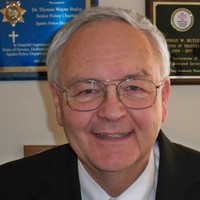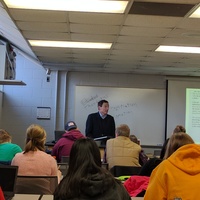
Gary W Sneller
After 40 years in active parish ministry, in retirement I am renewing research on the Gospel of John in areas of orality/textuality, media consciousness/media culture, and performance criticism arising out of my Ph.D. studies with Dr. Kelber at Rice University from 1979-1986.
Supervisors: Dr. Werner Kelber
Supervisors: Dr. Werner Kelber
less
Related Authors
John L Ronning
Faith Theological Seminary
Michael Jude Denis
UNIVERSITY OF PORT HARCOURT, NIGERIA (UNIPORT).
Daniel H Fletcher
Amridge University
Charles B Puskas
North Central University
Randy Neal
Amridge University
Mako Nagasawa
Hellenic College/Holy Cross










Uploads
Papers by Gary W Sneller
Drafts by Gary W Sneller
I begin by taking a new look at how the Greek word, “σημειον” functioned in non-Johannine usage (in particular ancient Greek literature, in the LXX/Hebrew Scripture, and in other New Testament writings), then I briefly re-examine the issue of a presumed “signs-source” used by the author of the Fourth Gospel, and finally, I demonstrate how the “signs” written in the Gospel of John function linguistically therein to strengthen and support the author’s purpose in writing his gospel by authenticating the Jesus presented in the written text as “the Christ, the Son of God.”
in the Gospel of John
Nestle-Aland NOVUM TESTAMENTUM Graece
28th edition
I begin by taking a new look at how the Greek word, “σημειον” functioned in non-Johannine usage (in particular ancient Greek literature, in the LXX/Hebrew Scripture, and in other New Testament writings), then I briefly re-examine the issue of a presumed “signs-source” used by the author of the Fourth Gospel, and finally, I demonstrate how the “signs” written in the Gospel of John function linguistically therein to strengthen and support the author’s purpose in writing his gospel by authenticating the Jesus presented in the written text as “the Christ, the Son of God.”
in the Gospel of John
Nestle-Aland NOVUM TESTAMENTUM Graece
28th edition